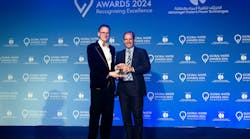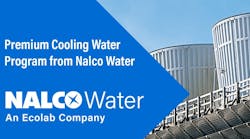James Laughlin, Managing Editor
I had the chance recently to talk with Liese Dallbauman, Director of Water Stewardship for PepsiCo’s global food and beverage businesses. Her responsibilities include water use tracking, global water risk assessment and mitigation, and water footprint strategy development for the company.
PepsiCo has the stated goal of reducing water usage by 20 percent by 2015, from a baseline set in 2006. Even though it still has three years to reach that goal, the company has already reduced water use by 19 percent, Dallbauman said.
PepsiCo has facilities scattered around the globe producing a wide range of food and beverages. While the company is best known for its Pepsi products, the company also bottles Gatorade and Tropicana fruit juices. Food products include Quaker cereals and Frito Lay snacks, just to name two.
As of last year, average water use per unit of beverage was 2.2 liters per liter. For food production, it was 7.3 liters per kilogram. While water is used as an ingredient in many products, the largest percentage of water is used around the plants for sanitation and cleaning.
Dallbauman said she “owns” the company’s Recon Water program, with its focus on resource conservation. The multi-stage program begins with understanding where water is being used in the plant and how much it costs. That is followed by determining the actual location in the plant where water is being used, and how it might be reused in other processes nearby.
Reuse of “spent process water” is a major initiative in the company, with new plants being designed with that specific goal in mind. In some cases reusing water isn’t practical in existing plants simply because of plant layout and the distance between compatible processes.
In looking at water usage, the team has learned that not all water is equal – the cost varies by source and application within a facility. Using the water “as is” is the cheapest, while softening and heating the water makes it more expensive. Typically boiler makeup water is among the most expensive.
A simple leak detection program can also yield big results, especially in older plants. “It’s not expensive, it’s not difficult, and most plants need one,” Dallbauman said.
One thing Dallbauman and her team have discovered in this program: simple awareness about water usage has been a major driver of change, with plant managers often surprised by the amount of water used and associated costs.
PepsiCo was involved in the development of the Global Water Tool of the World Business Council for Sustainable Development. The tool is great for a very high level understanding of the risks associated with water quality and availability. However, the company is currently partnered with the Nature Conservancy to develop a tool that can be used across the company at the plant level.
The tool will include questions to ask in gaining a better understanding of water risk, including physical scarcity, declining water quality and a company’s relationship with the surrounding community. The project team hopes to publish results later this year.

